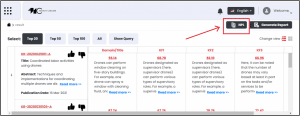
Scholarly publications have always served as the go-to source of information for cutting-edge research in academia. These publications are commonly referred to as “non-patent literature,” or NPL, in the context of intellectual property. NPL has a wide range of IP applications, from being a valuable source of prior art for invalidity or novelty searches to competitive intelligence. Within the document, the inventor cites any NPL that is closely related to the subject matter of a patent filing. These citations are critical in future patent evaluations. Many competitive intelligence workflows rely on NPL citations to gather information about the breadth of the patenting entity’s research.
Non-Patent Literature Types and Their Sources
NPL is divided into two categories: journal references and non-journal references.
- Journal References: Scientific publications, sources: IEEE, Springer, Research Gate, Wiley Online Library, etc.
- Non-Journal References: Conference proceedings, company newsletters, reference books, blogs, social media, announcements, YouTube, magazines, patent related documents, books, sources: Darwent Innovation Index, Google Scholar, Google Patents, lens.org, etc.
What Role does Non-Patent Literature Plays in IP Processes?
A. Novelty/Invalidation Search
NPL, in addition to patents, counts as valid prior art for invalidity or novelty searches. Because NPL is published before patents (which can take anywhere between 12 and 24 months from the filing date to publication), it should be a part of your prior art searches, particularly in projects where future investments are high and the risk of spending resources and time on inventions that may not receive patent protection needs to be mitigated ahead of time.

B. Technology Analysis and Competitive Intelligence
NPL has a lot of potential for competitive intelligence. Some notable competitive intelligence activities are:
- Seeking open innovation or licensing partners: Literature research can assist in locating the right open innovation or licensing partner. If a company has already begun developing a technology, it can use literature references to find industry partners. Thus, speeding up technological advancements.
- Accelerating the innovation cycle: A thorough examination of NPLs in conjunction with patents aids in the acceleration of the innovation cycle from idea generation to commercialization. Universities typically only publish a portion of their research in patent applications at first. And no technology landscape or problem-solution analysis is complete unless non-patent literature is examined.
- Exploring research directions and investment opportunities: The extraction and analysis of hidden technologies from patent and NPL datasets can aid in the discovery of new opportunities and parallel application areas for your research. If your idea is not particularly novel, you can combine it with the work of others to make it so.
How can XLSCOUT assist you in incorporating NPL into your IP processes?
XLSCOUT provides all the tools needed to extract topics and keywords from patents and NPLs to perform various slice-and-dice or trend analysis. When you combine patents and NPLs in your technology landscapes, you increase your chances of discovering hidden and deeper technological insights.

